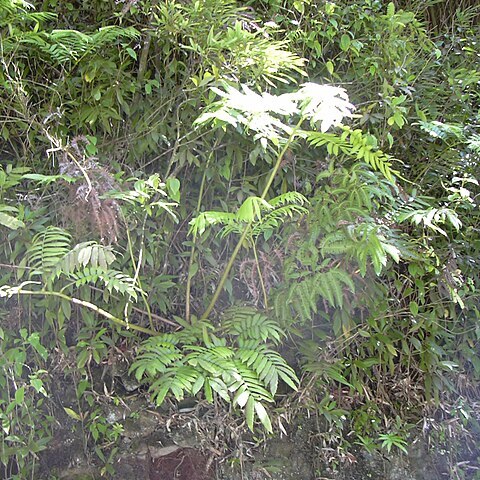Plants terrestrial (rarely epiphytic, sometimes in streams), evergreen. Rhizomes erect, ascending, or creeping, amylaceous (starchy), polycyclostelic to dictyostelic. Fronds monomorphic and long-lived or dimorphic and fertile ones short-lived (Danaea), simple or compound, 1-4-pinnate or (pedate-)palmate (Christensenia), small (ca. 20 cm) to very large (up to at least 6 m). Stipes fleshy, with a pair of stipulelike appendages at base, often with conspicuous lenticels. Pulvini at base of fronds, at nodes, at bases of pinnae, and in some species at "naked" nodes (without pinnae) along stipe. Veins free, simple or bifurcate, or reticulate (Christensenia), false veins present between true veins or absent. Tissues mucilaginous. Indument of multicellular uniseriate hairs and basifixed or peltate scales. Sori lacking true indusia, usually with paraphyses, superficial, sunken or stalked, elongate along veins, bilateral or radial. Sporangia partially or completely fused into synangia, dehiscing by a slit or pore. Spores trilete or monolete, with bullate, muriform, or stellate ornamentation. Prothalli very large, thalloid, photosynthetic.
Large terrestrial ferns with often very large fronds and stipular outgrowths at the base of the stipe. Rhizome creeping or erect, short and massive
Rhizomes short massive erect trunks, covered with persistent stipules; leaf–traces with complex steles
Robust perennial herbs with fleshy mycorrhizal roots and multicellular root hairs

